| When we travel to see solar eclipses, I carry this simple setup.
It is always a hit, and hardly takes up any space or weight in
our carry-on luggage.
The picture on the right was taken during the annular eclipse
of 2023, in Campeche, Yucatan. Below: observing the transit of
Mercury in 2019.
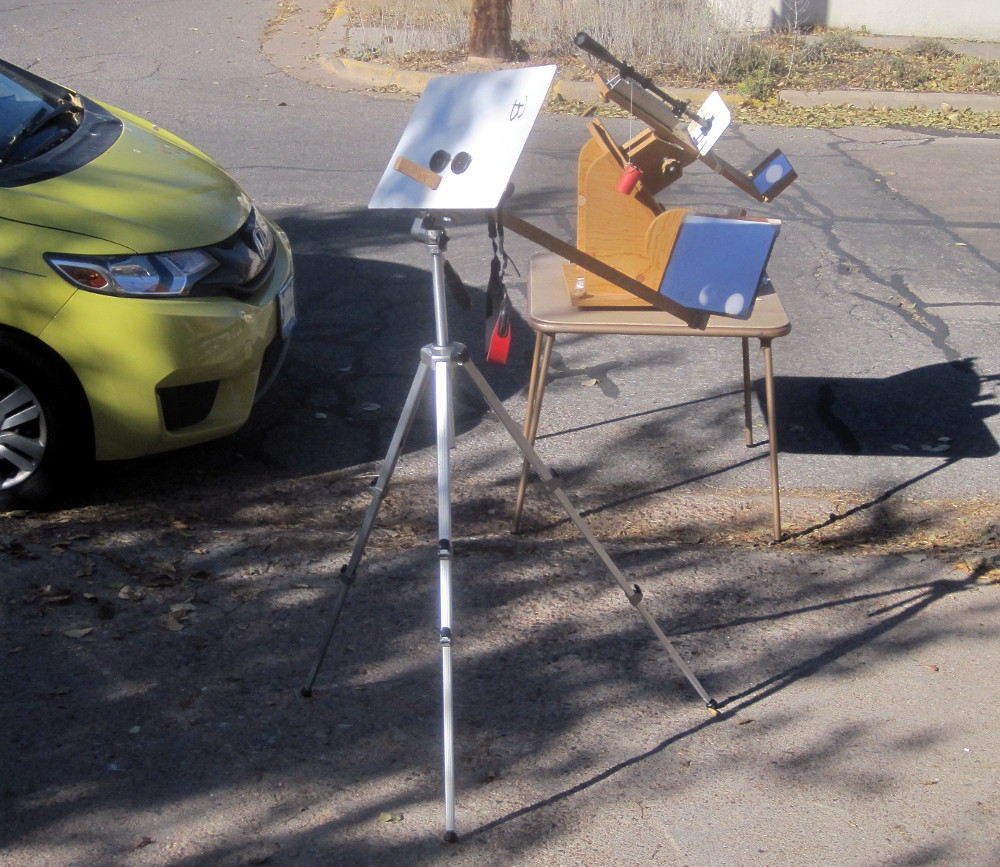
| 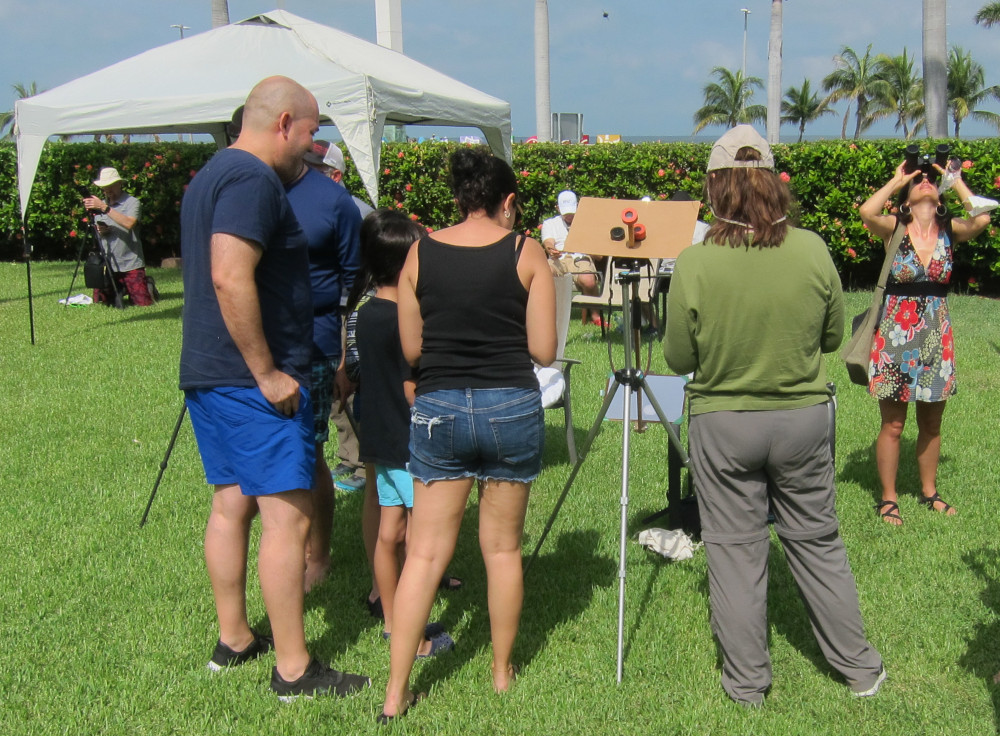
|
| Most binoculars have a screw point somewhere. Sometimes it is
hidden behind a decorative cap.
| 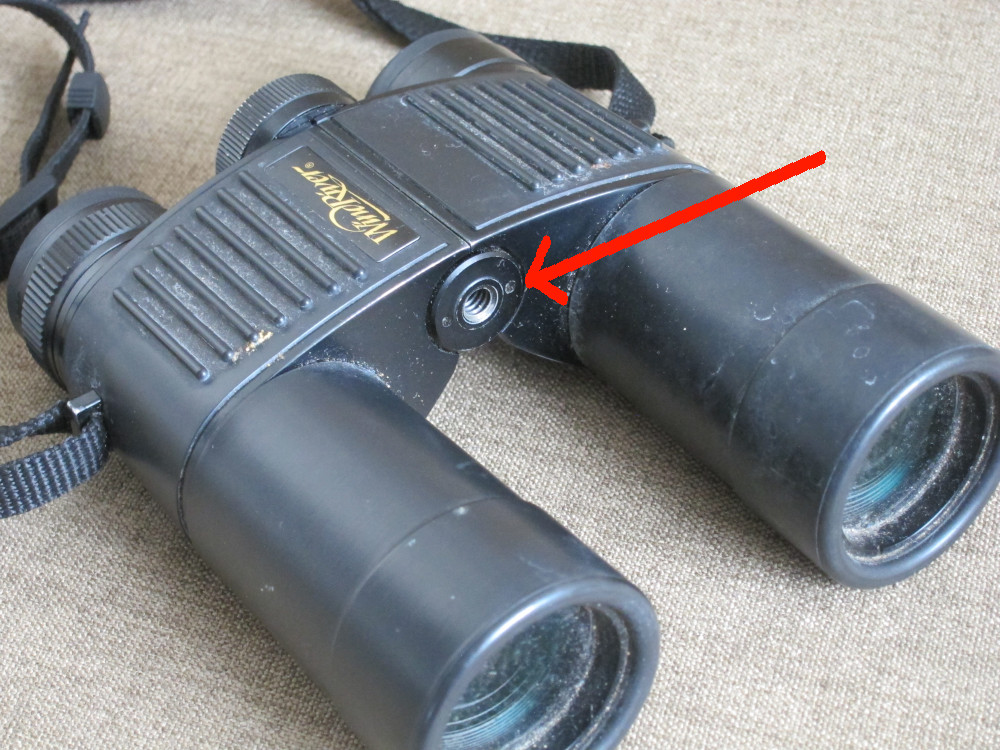
|
| A small piece of wood, a screw and a wingnut mount to this point.
| 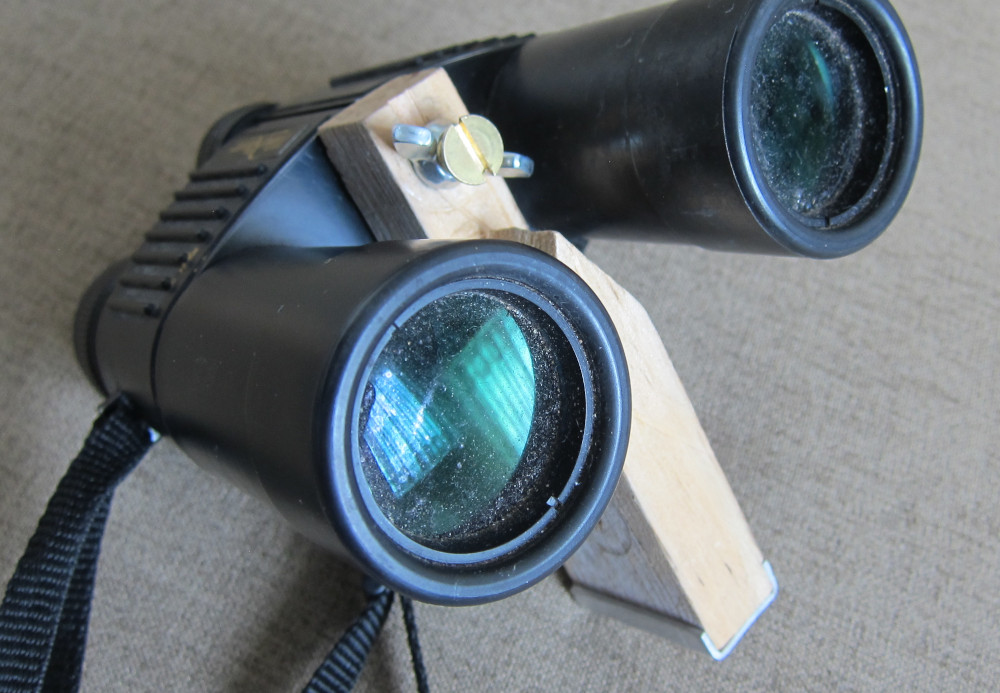
|
| On the bottom, I have a T-nut to mount to the screw of the
tripod. I added a piece of aluminum to reinforce this.
Here is another version:

| 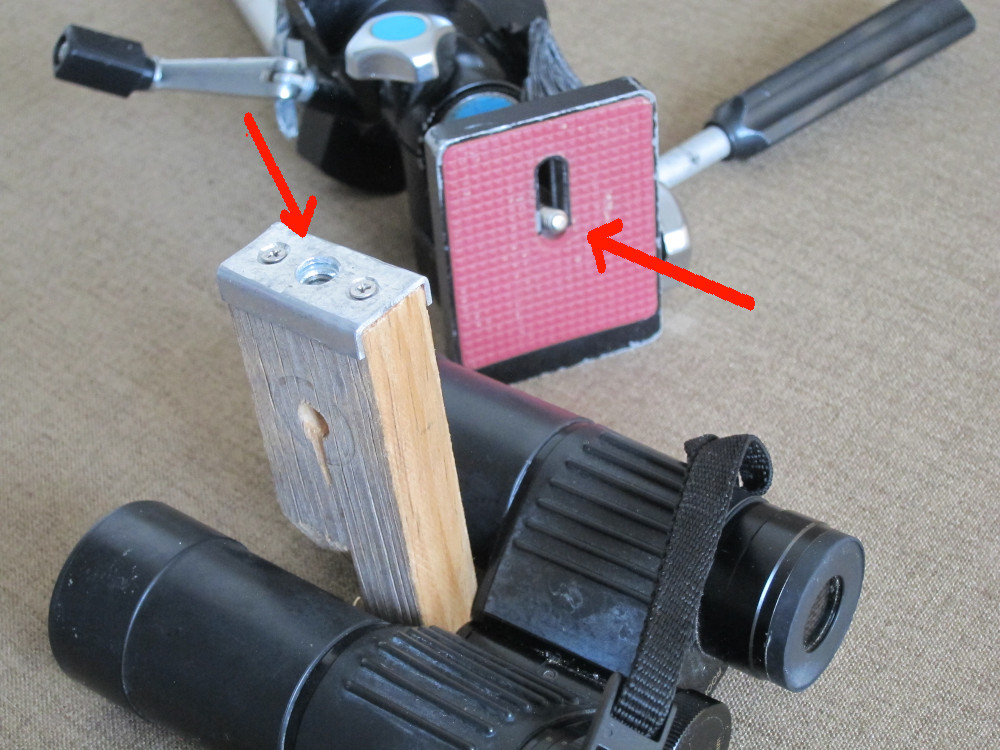
|
Now the binoculars mount on the tripod.
The hole is where the stick mounts.
| 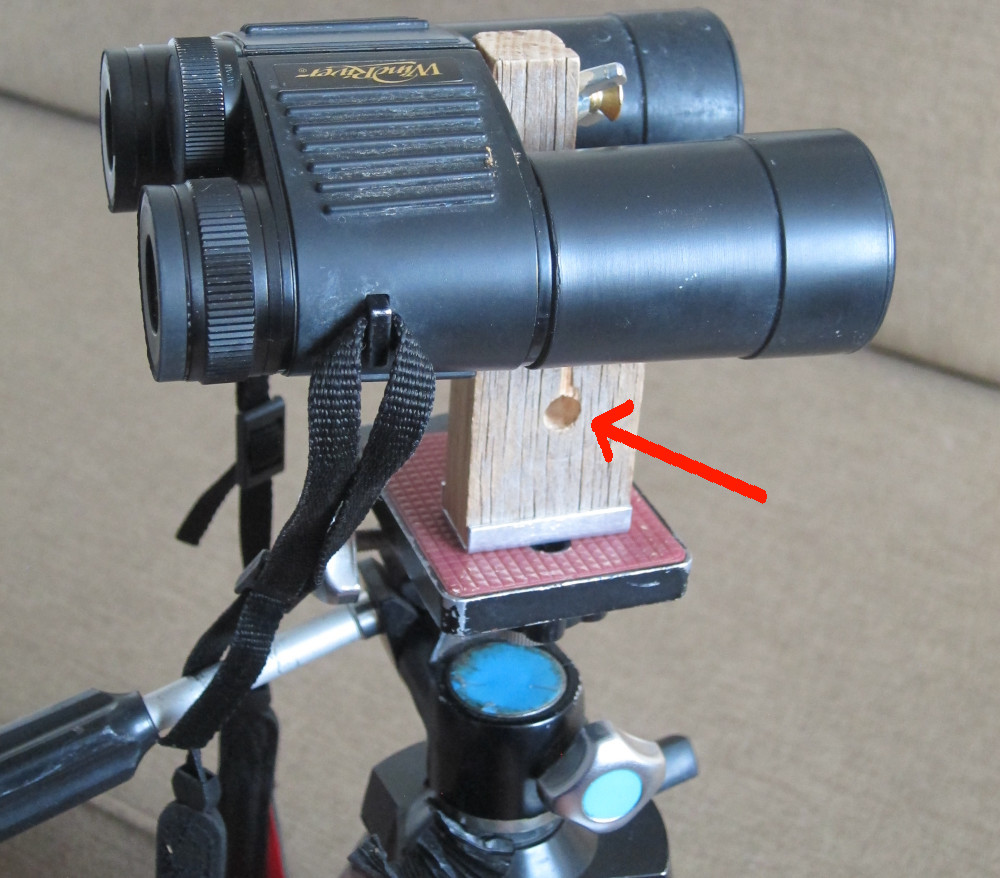
|
| The stick is about 25×13 mm. It mounts with a 1/4-20
bolt with a wingnut. I glued some sandpaper to make sure this
joint does not slip.
| 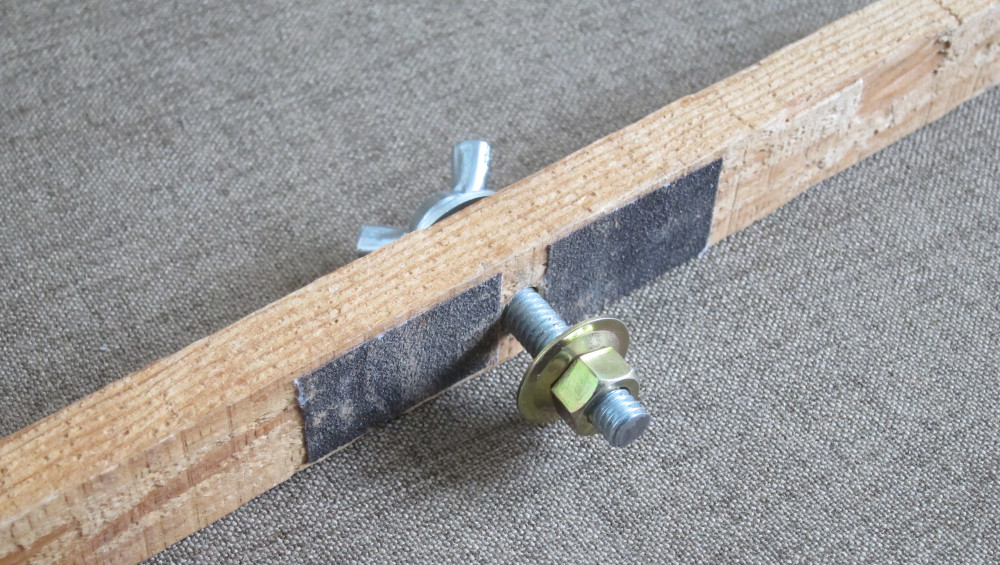
|
| The stick is about 95cm from this bolt to the back. This is too
long to fit in my bag, so I cut it in the middle, and it
re-assembles with 2 wood screws.
| 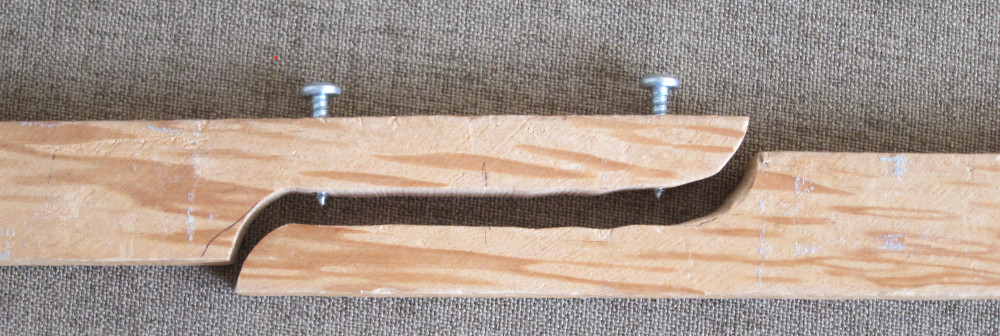
|
| On the back is the screen, a little bigger than a sheet of paper.
It mounts with a small bolt and a wingnut
| 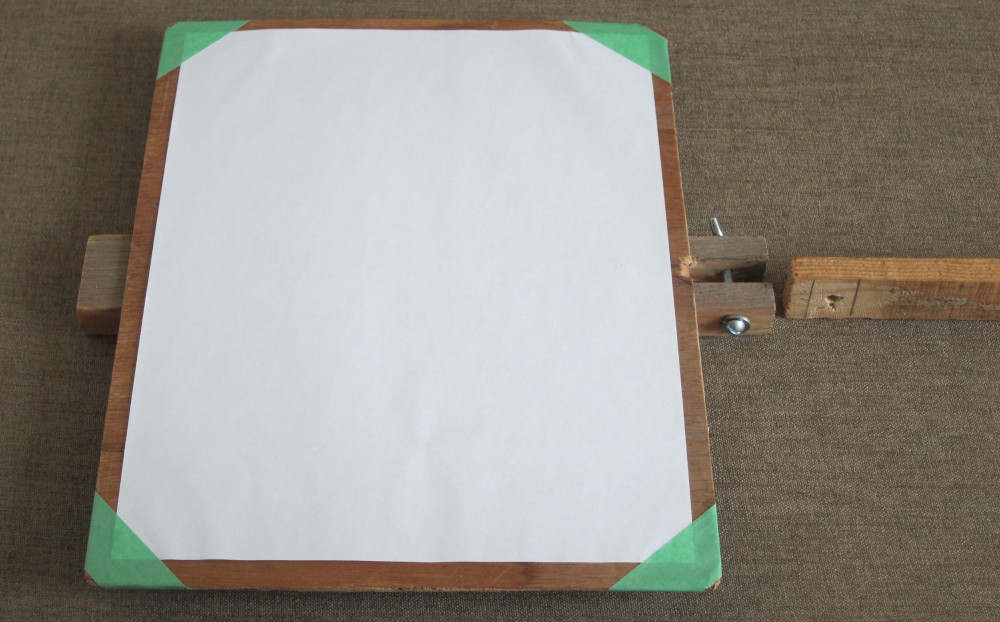
|
| Here is the setup. All that is needed is a piece of cardboard to
cast a big shadow.

| 
|
| I made some caps that fit over the front of the binocs.
The one on the left has a small opening, to restrict the amount
of light entering. This is to prevents overheating of the
lenses and prisms inside the binocs. My binocs have a 32mm front
aperture, and the seem to be fine without this cap.
The cap on the right has an opening covered with a filter cut from
eclipse glasses.
| 
|